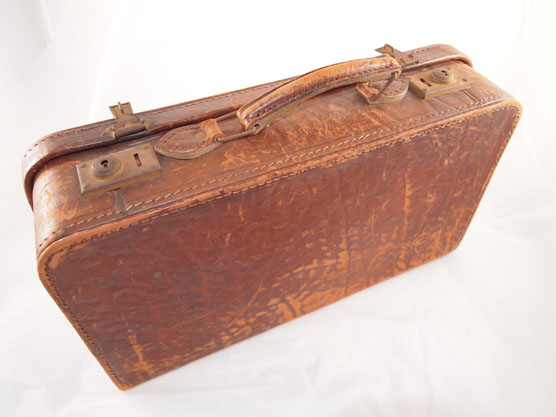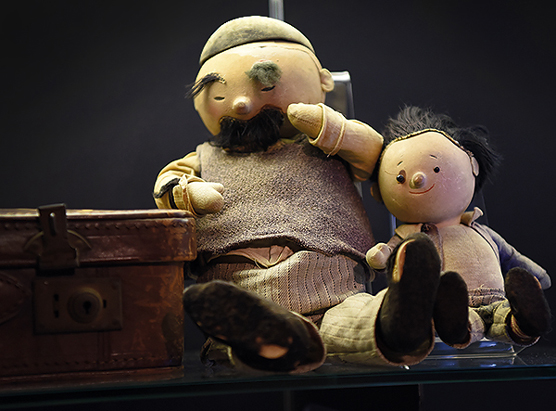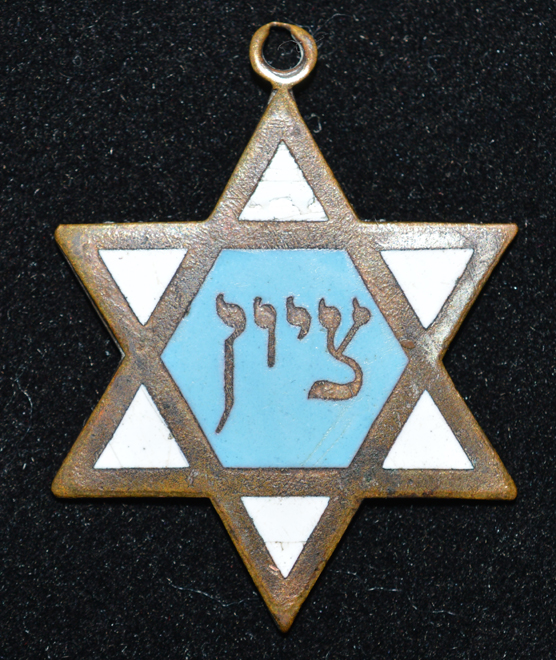Arrival in England
The children’s long journey ended in Liverpool Street Station in London. Tired and emotionally shaken, the “Kinder” emerged from the train. Feelings ranged from liberation to bitter loss. Now they had to settle into a completely new life with new people, a new language and uncertain prospects.
Alone with minimal possessions
Most kinder travelled alone with one small suitcase permitted containing mainly practical items like clothes.

One suitcase –that was all the children on the Kindertransports were allowed to bring. This one was brought to England by Sigmar Berenzweig, who arrived 8 years old on the Kindertransport. Children had to be able to carry their luggage alone since not enough helpers were available to accompany the trains.
© National Holocaust Centre and Museum
Homesick and alone
Lovingly, parents frequently managed to pack at least one sentimental item like a toy or photo album as well. These objects offered a small bit of familiarity in an otherwise foreign world.

How can you make separation easier under traumatic circumstances? What small consolation could parents offer their children? The father and son dolls came to England with Sigmar Berenzweig. They are reminiscent of the German 1930s cartoon “Vater und Sohn” (“Father and Son”). “Vater und Sohn” told stories about the mischievous and inseparable bond between a father and his son. Both father and son stuck together through thick and thin.
© National Holocaust Centre and Museum
Where will I stay?
In ideal cases, the children were warmly welcomed by foster families. But there was also a lot of improvisation and uncertainty. Some children switched between different hosts over a long period of time. Others were sent to different kinds of group accommodation.
Finally: Arrival in London! After a full day of travel. What would it be like? Ruth David’s arrival in London shows how improvised welcomes in England could be and how much everything depended on private initiative.
© National Holocaust Centre and Museum
Girls preferred
Teenage boys in particular were difficult to place, as foster carers usually preferred girls or younger children.
A different arrival story. How were children selected by host families? Did children have any say on this? 12-year-old Steve Mendelssohn takes the initiative!
© National Holocaust Centre and Museum
Consequently, a number of children stayed in group homes, farms or even a refugee camp, such as Dover court near Harwich.
What happened if nobody came to pick you up? Where would you go?
Bernard Grunberg remembers a very cold December in a holiday camp in 1938.
© National Holocaust Centre and Museum
An alien language and way of life
No matter where they stayed, all children had to adapt to a new language and way of life in Britain. Most children attended school. But some older children –mainly young adolescents -were exploited, most commonly as unpaid domestic help or as farm hands.The fact that many Jewish children were now brought up in Christian households caused further concerns around the preservation of their Jewish identity.

Bravely, 11-year-old Ilse Buxbaum wears her Star of David pendant through the years of persecution and during the journey to England. Fearing that Nazi guards could pick on it, she hides it under her clothes. But she holds on to it. For some children religion provided solace and a positive identification point. © National Holocaust Centre and Museum